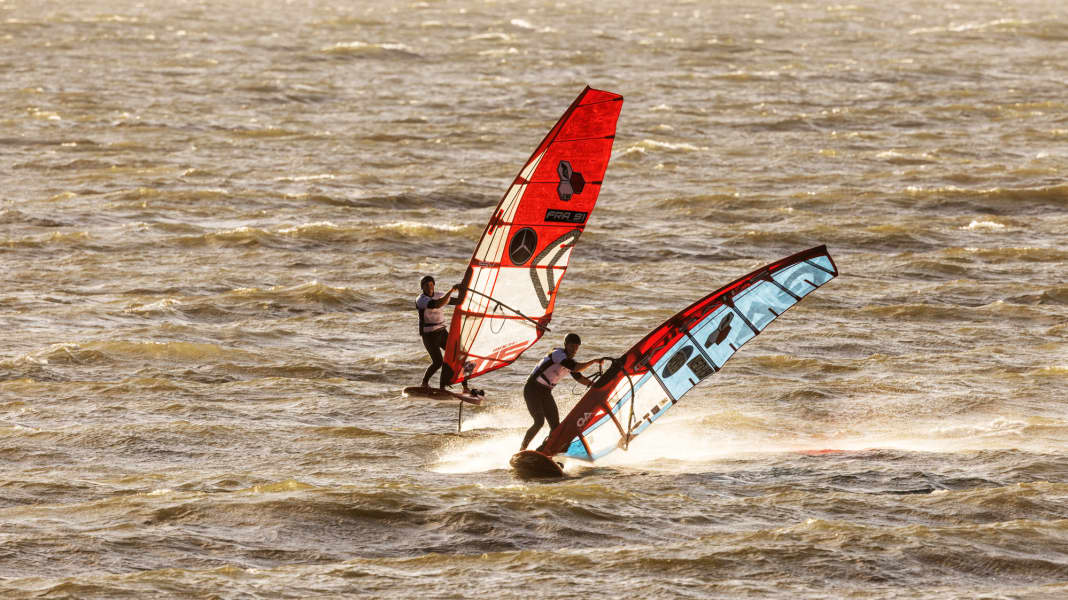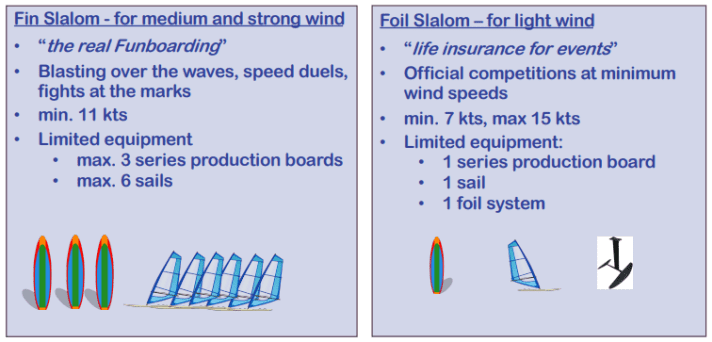
"We're bringing the fun back!" This is the motto under which the IFCA (International Funboard Class Association) today announced a new set of rules for the coming year. In it, fins and foils will be raced and scored completely separately. This means that the IFCA is taking a different approach to the PWA and the German Windsurf Cup, for example, where there is only one slalom classification and riders can decide for themselves which equipment they want to compete with.
The new IFCA rules stipulate that slalom races can be started on the Fin from eleven knots. Riders can enter a maximum of three series boards and six sails. The IFCA describes this as "real funboarding", with close duels at the buoy and everything that goes with it.
In addition, it should be possible to start foil races from seven to 15 knots. This option is described as "life insurance for events" that would otherwise not have been possible due to a lack of wind. The material is limited to one standard board, one sail and one foil. Both disciplines are scored separately. Events can be organised for both variants or limited to one classification.

Foils too complicated and dangerous for many regatta beginners
According to the IFCA, the separation of fin and foil is the result of "intensive discussions between officials, riders, the industry, organisers and the media". The free choice between fin and foil has meant that many junior and amateur riders who do not want to or cannot compete on foils have dropped out. At the same time, the top riders have also resorted to foiling in strong winds because it is now usually the faster option.
"Many surfers foil in light winds to spend more time on the water. It also makes it possible to start an event in light winds," says a statement from the IFCA. "But there are only a few who like foiling in more wind. Many feel unsafe and don't want to hurt themselves or others because they no longer have control." As a result, many have decided to stop competing.
At the same time, according to the IFCA, sales figures in the foil sector are lagging behind the costs for development and production. This money is then lacking in other areas that are much closer to the "normal windsurfer" - such as racing with fins. Without a strong platform such as regattas with exciting duels, the slalom and freerace equipment sector suffers.
Are PWA and DWC also following suit?
"Foiling is an enrichment of the sport, but with more wind most windsurfers prefer to ride the fin," says the IFCA. "Our disciplines represent what the hobby surfer would ride at their home spot: Foils for having fun in light winds and fins for heating in medium and strong winds."
This decision by the IFCA could also lead to changes in the PWA and the German WIndsurf Cup. Even in these series, not everyone is happy with the fact that you can only really compete on the foil. The "Racer of the Sea", on the other hand, has a fin-only classification in order to keep the barrier to entry as low as possible.
